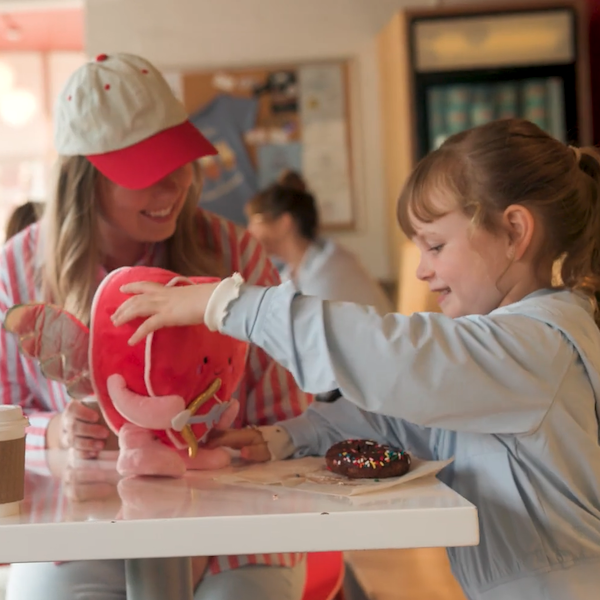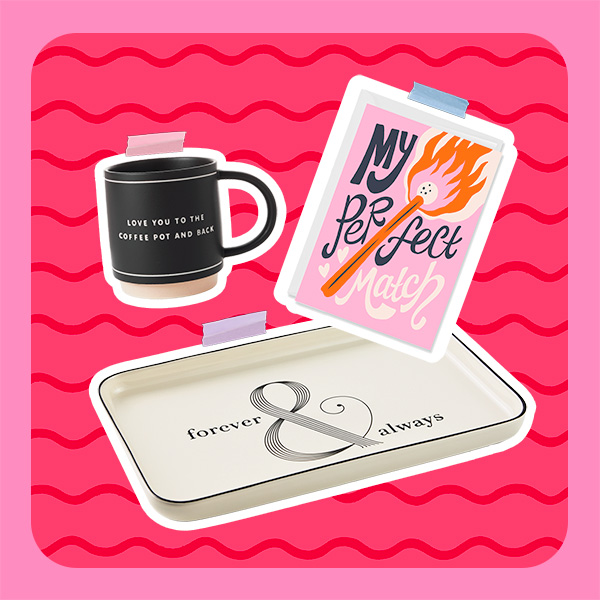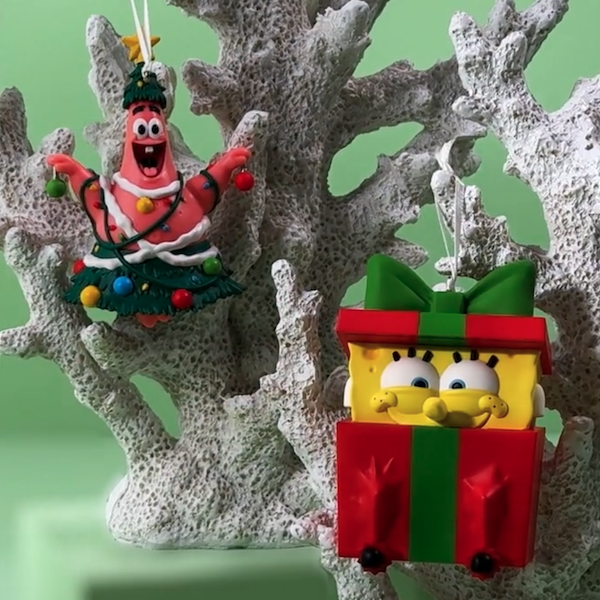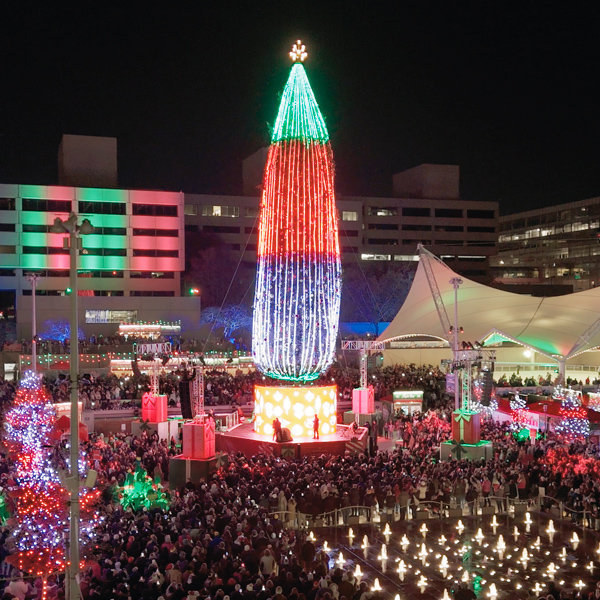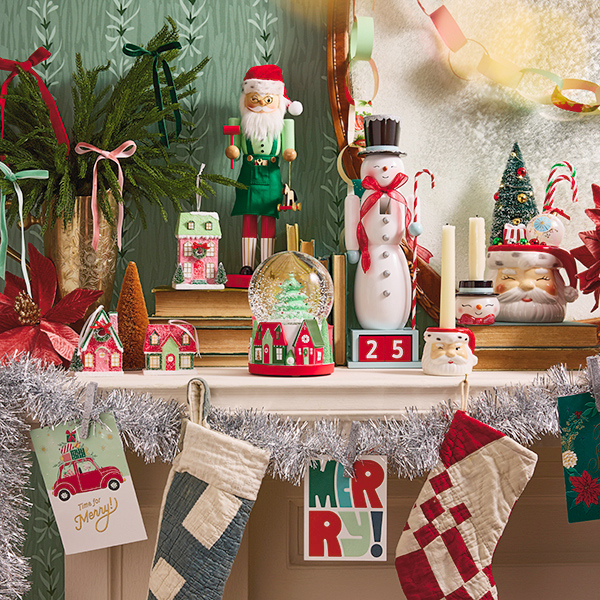What is St. Patrick’s Day?: A peek into its history and finding fun ways to celebrate
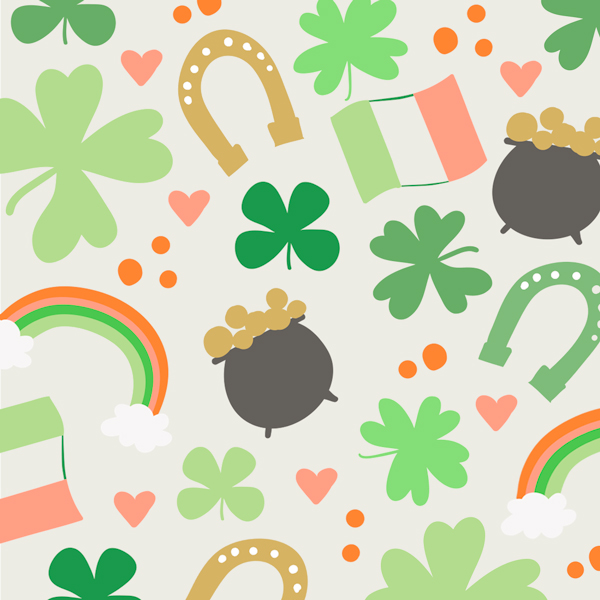
I’m Irish. I won’t ask you to kiss me, but I am. Irish-American, an O’Connor on my mom’s side with roots traced back (and not too far back) to the Emerald Isle’s County Cork. So for as long as I can remember, St. Patrick’s Day has been a celebration in my family. And I mean a celebration. But what is St. Patrick’s Day?
Some of my most vivid and cherished memories are vibrant with every shade of green and the raucous sounds of family and friends singing along as my dad plays accordion. But as much as St. Patrick’s Day has been an annual part of my life, I must admit I didn’t often give very much thought to the reason for or the history of the holiday.
So let’s do that together, shall we?
Inspired? Create and share by tagging @hallmarkstores.
Who was St. Patrick?
You can’t ask “What is St. Patrick’s Day” without asking who the man himself was. Well first of all, despite being the revered patron saint of Ireland, St. Patrick was not Irish, having been born in Roman Britain to wealthy parents toward the end of the 4th century. His connection to Ireland began when he was taken prisoner by Irish raiders and brought to Ireland where he spent years in captivity.
After eventually escaping back to Britain, Patrick began religious training, was ordained a priest, and made it his mission to return to Ireland to minister to the Irish, who at the time were largely pagan. Indeed, the myth of St. Patrick banishing the snakes from Ireland is said to be a metaphor for his work in bringing Christianity to the Irish people and “driving out” paganism.
While it is uncertain, St. Patrick is believed to have died on March 17, 461 A.D., which is why he is celebrated every year on that day.
The history of St. Patrick’s Day
The Roman Catholic feast day of St. Patrick has been observed in Ireland since the ninth or tenth century, but many of the kinds of celebrations and traditions St. Patrick’s Day has come to be known for began in what is now the U.S.
The first American St. Patrick’s Day celebration appears to have been in Boston in 1737. The custom was started by the Charitable Irish Society of Boston, a Protestant organization founded that year to help needy Irishmen.
One of the most renowned St. Patrick’s Day parades first occurred in 1772 when Irish soldiers in the English military held a march in New York City to honor their patron saint and perhaps enjoy a little reminder of home. More parades followed, and in 1848, when several Irish Aid societies combined their individual parades into one, the official New York City St. Patrick’s Day Parade—the largest in the U.S.—was born.
As immigrants from Ireland increased in numbers and made homes in different American cities, including Chicago and even Savannah, Georgia, St. Patrick’s Day parades and celebrations flourished across the growing country along with Irish-American pride.
Today St. Patrick’s Day is celebrated across the globe, including (of course) in Ireland, where it remains somewhat truer to its roots as a spiritual and religious occasion.
How St. Patrick’s Day is celebrated
Aside from the ever-popular parades, St. Patrick’s Day is also celebrated with a variety of traditionally Irish food, drink, music, dancing and, of course, the wearin’ o’ the green.
As the tradition goes, anyone caught without some green on their body on St. Patrick’s Day must get pinched. Why? Well, because the color green makes you invisible to leprechauns—mischievous, magical little people of folklore—so if you’re not wearing it, you’re left vulnerable to a playful little attack, like a pinch.
In our family, my mom was the pincher, so we were always careful to at least be sporting one of the many St. Patrick’s Day buttons we owned.
Speaking of the shamrock…
The shamrock is a three-leafed clover, with symbolic roots in both pagan Irish tradition and in folklore that says St. Patrick himself used the ubiquitous clover to illustrate the Christian doctrine of the Holy Trinity. The shamrock has been used as a symbol of Ireland since the 18th century, and as such is highly visible in and around St. Patrick’s Day celebrations.
Eat, drink and be Irish-ish
In addition to making sure we had our green on, my family also commonly celebrated St. Patrick’s Day with “traditional” Irish food and drink—a practice begun, naturally, in the homes of the Irish which spread throughout American culture.
But the traditional Irish meal in this country is not actually as common in Ireland itself, where many will cook a meal of lamb or beef stew paired with colcannon—a mashed potato dish with cabbage. Bacon is also part of a traditional Irish dinner, and when the Irish in America sought a cheaper substitute, corned beef grew as the mainstay of St. Patrick’s Day meals, making corned beef and cabbage almost synonymous with Irish cuisine in America since the turn of the 20th century.
My parents loved corned beef and cabbage, especially my dad. Me and my siblings? Not so much. But you’d be amazed at how many foods can be colored green if you’re an Irish cook with a mission, as my mom was. Breakfast was green scrambled eggs. Cupcakes and shamrock-shaped cookies with green frosting and sprinkles were plentiful for the taking. There was always what I think was a pistachio ambrosia, which became a treat made for every holiday that we still just simply call “greenstuff.” Popcorn was turned green somehow. And it was all washed down with lime Kool-Aid and lots of it.
As for the adult beverages of choice, there was always the dyed-green beer that we had at all of our parties—a concoction also introduced to St. Patrick’s festivities in America, not Ireland. Other adult drinks common to St. Patrick’s Day are popular Irish stouts like Guinness, Irish whiskeys and liquors, and…well, pretty much any cocktail with a hint of green in it.
One of the reasons food and drink play such an indelible role in St. Patrick’s Day is, in fact, because of actual Irish practice and not American influence: the St. Patrick’s Day feast of March 17 falls within the six-week Christian season of Lent, in which Christians are called to abstain from certain things like meat and, in some homes, alcohol.
St. Patrick’s Day became a one-day break from those Lenten fasts, when families could indulge in a little joyful celebration with their family and friends, enjoying some of their preferred tastes.
Getting “jiggy” with it
The key to St. Patrick’s Day for me, and for many celebrants around the world, is Irish music. As I said, my dad played the accordion, so not a year would go by without a slightly rambunctious and mostly off-key sing-along of Irish songs, both traditional and less so.
Popular St. Patrick’s Day songs are a mix of cheeky and upbeat, solemn and more serious, political, religious and secular, and everything in between. My dad had lyric sheets printed so everyone knew the words, from the traditional Toora-Loora-Loo to Danny Boy to When Irish Eyes Are Smiling and, eventually, to more contemporary Irish music that we kids would request.
I never did master the Irish jig, but countless St. Patrick’s Day songs to get your toes tapping, your voice raised and your heart full of Ireland can be found on any number of St. Pat’s playlists for your own celebrations.
What to say in a St. Patrick’s Day card
Ireland is known for many blessings and expressions, some of which may translate well into a warm message written to wish someone a Happy St. Patrick’s Day in a note or card.
“May the road rise up to meet you…”
The full text of this Irish blessing is a wish for good fortune in life and can be expressed in several more conversational ways.
- Wishing you all the best today and always.
- Hope you’re blessed with happiness, health and lots of love.
- Here’s to good life and the luck of the Irish!
- Thinking of your friendship on St. Patrick’s Day.
- Wishing you happy days and blue skies ahead.
“May the saddest day of your future be no worse than the happiest day of your past.”
A wish for future happiness that could also be expressed like this:
- Hoping things continue looking up for you.
- All happiness, all your life long. That’s what you’re wished.
- Hope every day is better than the last!
“Top o’ the morning to you.”
A simple wish for a good day:
- Hope you have a happy St. Patrick’s Day!
- Wishing you the best St. Pat’s ever!
“Sláinte.”
Pronounced “slaynt,” the word is an Irish drinking toast that translates to “health.”
- Cheers!
- Here’s to your health and happiness!
Erin Go Bragh
Being Irish-American in this country, just like being Irish in Ireland or anywhere else in the world, comes with a lot of reason to be jubilantly proud as well as reverently introspective, and I’m glad my parents instilled in me the joy of celebrating that heritage on St. Patrick’s Day, even if it wasn’t until I was an adult that I took a closer look at the day’s history, meaning and traditions.
Erin Go Bragh is the anglicization of the Gaelic phrase Éirinn go Brách and is most commonly translated as Ireland Forever. No matter what your own background may be, that’s a sentiment I think we all can appreciate, especially on a day like St. Patrick’s Day.
So until then, Sláinte, my friends, from my family to yours!
Looking for more springtime fun? Check out these ideas:
Shop St. Patrick's Day
See allYou may also like
See more-
Valentine's Day Make little hearts happy this Valentine’s Day 💞
Nothing lights up a little one's face like letting them know just how much they're loved. Okay...except for when they...
-
Valentine's Day Valentine's Day gifts for him: 100+ ideas for the boyfriends, husbands, dads and sons in your life
Who’s ready for Valentine’s Day?! 🥰 We absolutely love this holiday and can’t think of a more perfect time to shower ...
-
Calendar Flip Spring Forward: March 2026 Holidays and Observances
Color us excited! From the wearin’ of the green and more sunny fun to colorful Holi festivals and celebrating crayons...
-
Calendar Flip Welcome a New Year: January 2026 Holidays and Observances
HAPPY NEW YEAR! If that hurt your head, you might have celebrated a little too much. When you’re feeling better, we h...
-
Calendar Flip Hello, Love: February 2026 Holidays and Observances
Let’s warm up this cold month with love and connections. From valentine cards to dressing up your pet, this month has...
-
Christmas Christmas gift wrap ideas to match your holiday personality
If you’re anything like me, the holiday season can make you tap into different sides of yourself. Maybe you become th...
-
Gifting 60+ Peanuts® Snoopy gifts to help fans channel their favorite beagle
It was a dark and stormy night in the winter of 2015. I was 17 years old, overwhelmed with AP classes, senior-year st...
-
Christmas 3 Christmas kids craft ideas, plus activities for even more easy holiday fun
From decorating the house to baking cookies, the Christmas season gives us so many opportunities to get creative and ...
-
Christmas The best Christmas gift idea: Bikini Bottom BFFs
Got a bestie who's as silly as you? Or one who's there through all of life's storms with a smile? Then we think this ...
-
Christmas Which Disney Pixar character is your favorite? 🤔
Thankfully, with so many beloved Disney Pixar character Keepsake Ornaments, you won't have to choose a favorite this ...
-
Christmas Not having Cher on your tree? As if! 💅
If you're a Millennial, we predict you will be majorly, totally, butt crazy in love with this Clueless Keepsake Ornam...
-
Christmas 20 vintage Christmas ideas to turn up the charm this holiday season
When I think of my perfect Christmas, vintage vibes are always what come to mind first. Santa’s sleigh in a dreamy wi...
-
Christmas 20+ ideas to help you plan your trip to the Hallmark Christmas Experience
Ever wanted to step inside of a picture-perfect Hallmark Christmas movie? Or travel to a place where you could immers...
-
Christmas Sit fireside with the cutest snowfolks around!
A campfire might seem like the least likely place to find a few snowmen hanging out, but if it's cold enough, even th...
-
Christmas With so much magic, we can’t choose a favorite!
Every Keepsake Ornament is magical, but our ornaments with light, sound and music are in a class all their own. From ...
-
Christmas Stocking stuffer ideas for literally everyone on your list
The stocking stuffer struggle is real. By the time you’ve bought your main presents, you feel like you’re all out of ...
-
Christmas You love Keepsake Ornaments…we love rewarding you! 🥳
Collecting Keepsake Ornaments isn't just a hobby for you—it's a passion! And that kind of enthusiasm is something we ...
-
Christmas 60+ Christmas decorating ideas to deck your halls—and every other space!
If you’re searching for Christmas decorating ideas to make all your spaces extra jolly and put you in a merry mood, y...
-
Christmas Dance your way to Christmas morning 🦛🎄
Keep little ones giggling and grooving all holiday break-long with this musical dancing Christmas hippo plush! Does i...
-
Winter Lean into the Season: winter ideas to make the season bright and extra cozy
There are two types of people in this world: those who love winter and those who’d endure an eternity of wearing wet ...

